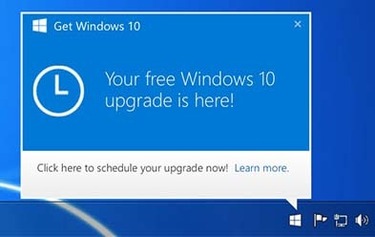Windows 10 upgrade anyone? Is this Microsofts last OS?

Can I upgrade to Windows 10? This is a question that many will ask about the Microsoft operating system which launches in Summer 2015. To do you a solid, I have put this guide together to answer your burning questions.
Who can upgrade to Windows 10?
For at least one year after Windows 10 launches, Microsoft will offer free upgrades to the OS for users of:
- Windows 7
- Windows 8.x
However, this free offer does not apply to all OS editions. It’s only available to users of non-enterprise versions of the Windows Operating System
Is their a upgrade path from XP or Vista to Windows 10?
Short answer is “NO” For users of older operating systems such as Windows Vista or *gasp* Windows XP, there is no direct upgrade path to Windows 10. You will have to do a clean install. At this point if your on original hardware you might be better off starting fresh and buying newer hardware that comes with Windows 10.
Windows 10 Volume Licensing
So no free upgrade to Windows 10 for enterprise users? Well… if you’re running enterprise editions of Windows already, you’re probably good. Windows 7 and Windows 8.x Enterprise users can upgrade to Windows 10 through Microsoft Software Assurance (which is a paid Volume Licensing program that among other benefits, gives you rights to upgrade to future versions of Windows at no additional cost beyond the price of Software Assurance.
For those companies that don’t have Software Assurance, Microsoft has not yet announced plans for a Standalone Windows 10 Enterprise option without SA.
For companies that installed Windows 7 or Windows 8.x Professional edition using a volume license, on May 13th, 2015 Microsoft explicitly stated, “we are offering the full versions of Windows 10 Home, Windows 10 Mobile and Windows 10 Pro as a free and easy upgrade for qualifying Windows 7, Windows 8.1 and Windows Phone 8.1 devices that upgrade in the first year after launch.** Once you upgrade, you have Windows 10 for free on that device.”
Note that there is no language in that statement that differentiates between volume license, OEM, or retail. Microsoft plans to send final details about the upgrade offer via email before launch.
Can I upgrade to Windows 10 through Windows Update?
Probably the most convenient way to upgrade to Windows 10 is through Windows update, which is only available to users who meet certain minimum requirements. With Windows 7, you’ll need to have at least SP1 installed and with Windows 8.1 you’ll need at least the S14 update (from April 2014) to take advantage of a Windows 10 upgrade through Windows Update.
Everyone else running an older version of Windows 7 or Windows 8.1, or any version of Windows 8 will need to upgrade by using a downloadable ISO image or DVD media. And if you’re worried about having to manually migrate everything, you can rest easy knowing that any user upgrading from Windows 7 or Windows 8.x using install media or an ISO will still retain their applications, settings, and preferences.
Need more clarity? This Microsoft Windows 10 upgrade chart may help:
Users of Windows RT are not eligible for a free upgrade to Windows 10 and they do not have a direct upgrade path via Windows update or using install media.
As far as upgrade paths for each edition of Windows 7 and 8.x, On May 13th, 2015 Microsoft announced that the Windows 10 editions designed for use with PCs and large tablets include Windows 10 Home, Windows 10 Professional, Windows 10 Enterprise, and Windows 10 Education. Microsoft has not released information on how the free upgrades will map to the new offerings.
How much does Windows 10 cost?
No word yet on how much a standalone version of Windows 10 will cost for those that can’t upgrade for free or for those who buy a new PC with Windows 10 pre-installed (since those Windows licensing costs are paid for by the hardware manufacturer then passed along to you, usually at a discount).
Will Windows 10 be the last Microsoft Windows Operating System?
Microsoft has said that Windows 10 will be the last major Windows release. Instead launching a completely new OS every few years, they plan to continuously update Windows 10 going forward, adding new functionality as it becomes available. However, we don’t know how these features will be delivered or if users will have to pay to obtain them.
In Microsoft’s own words, they have said that “With Windows 10, the experience will evolve and get even better over time. We’ll deliver new features when they’re ready, not waiting for the next major release.”
Can I uninstall Windows 10?
What if you you upgrade to Windows 10 and you don’t like it? If you upgraded from Windows 7 or Windows 8.x, you can always roll back to your previous operating system.
Just remember that extended support for Windows 7 ends in January 2020 and extended support for Windows 8 ends in January of 2023.



